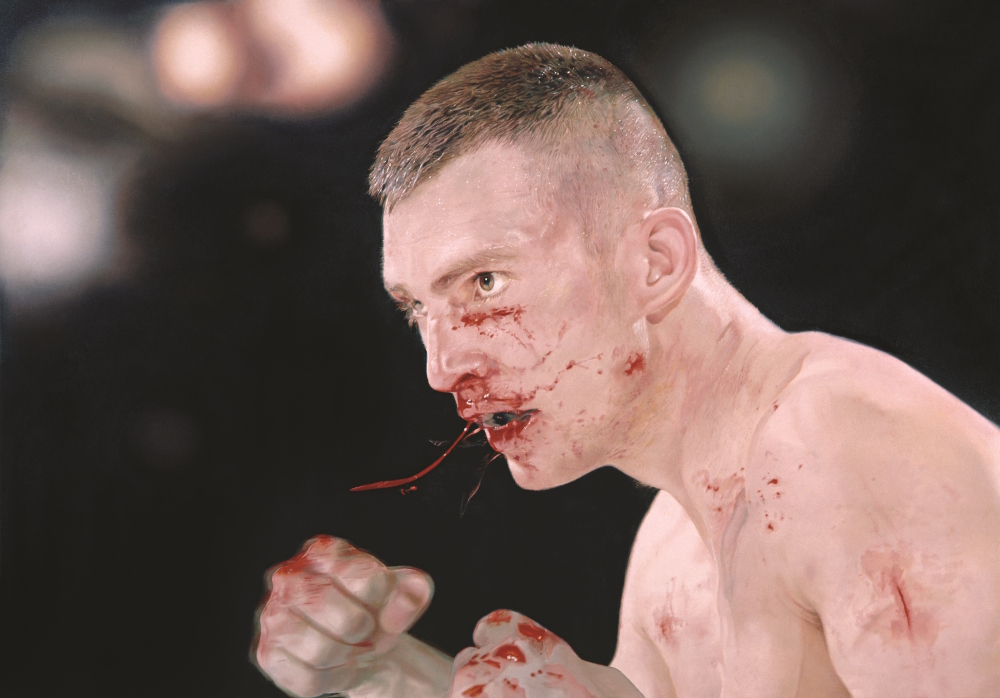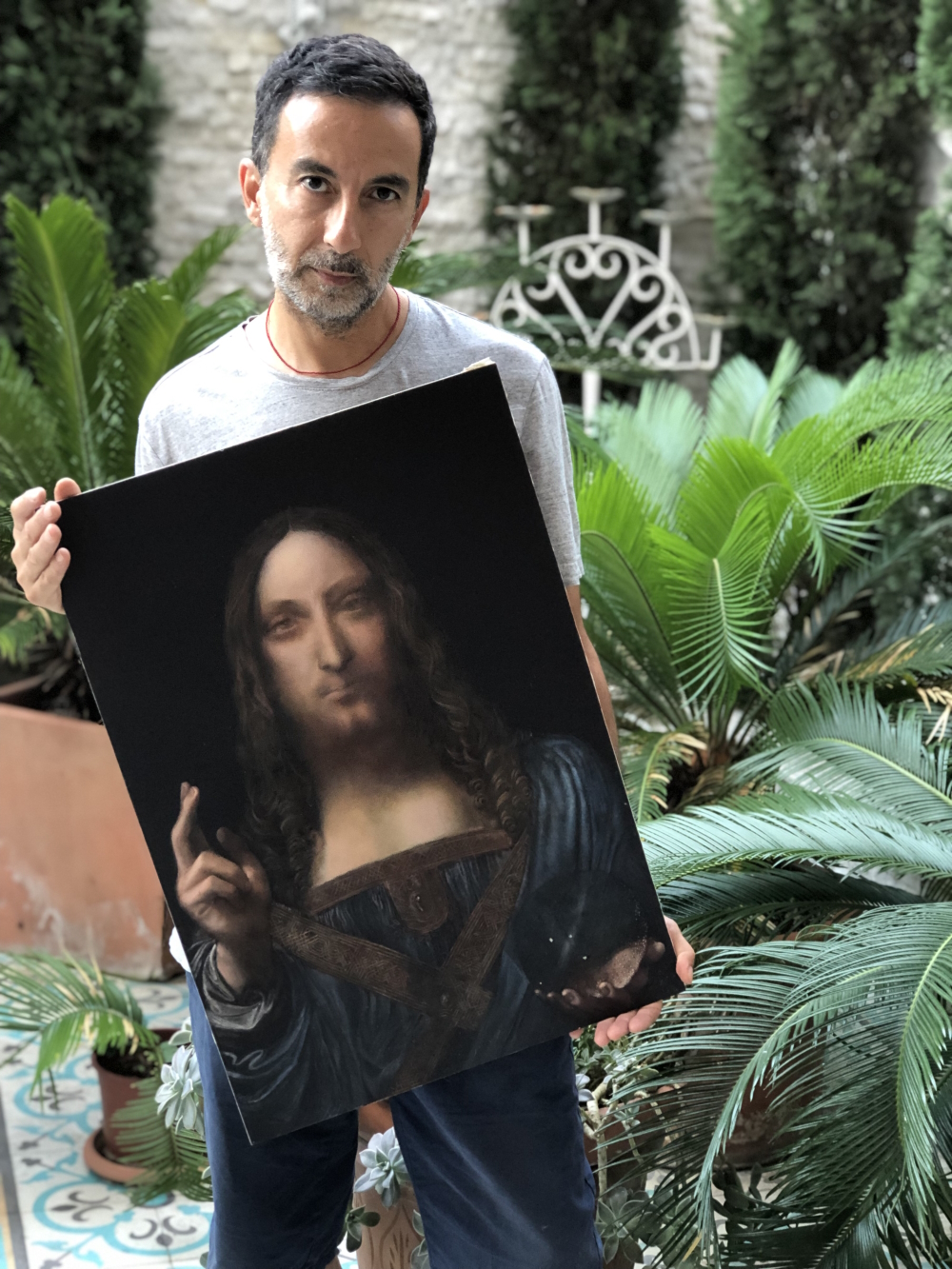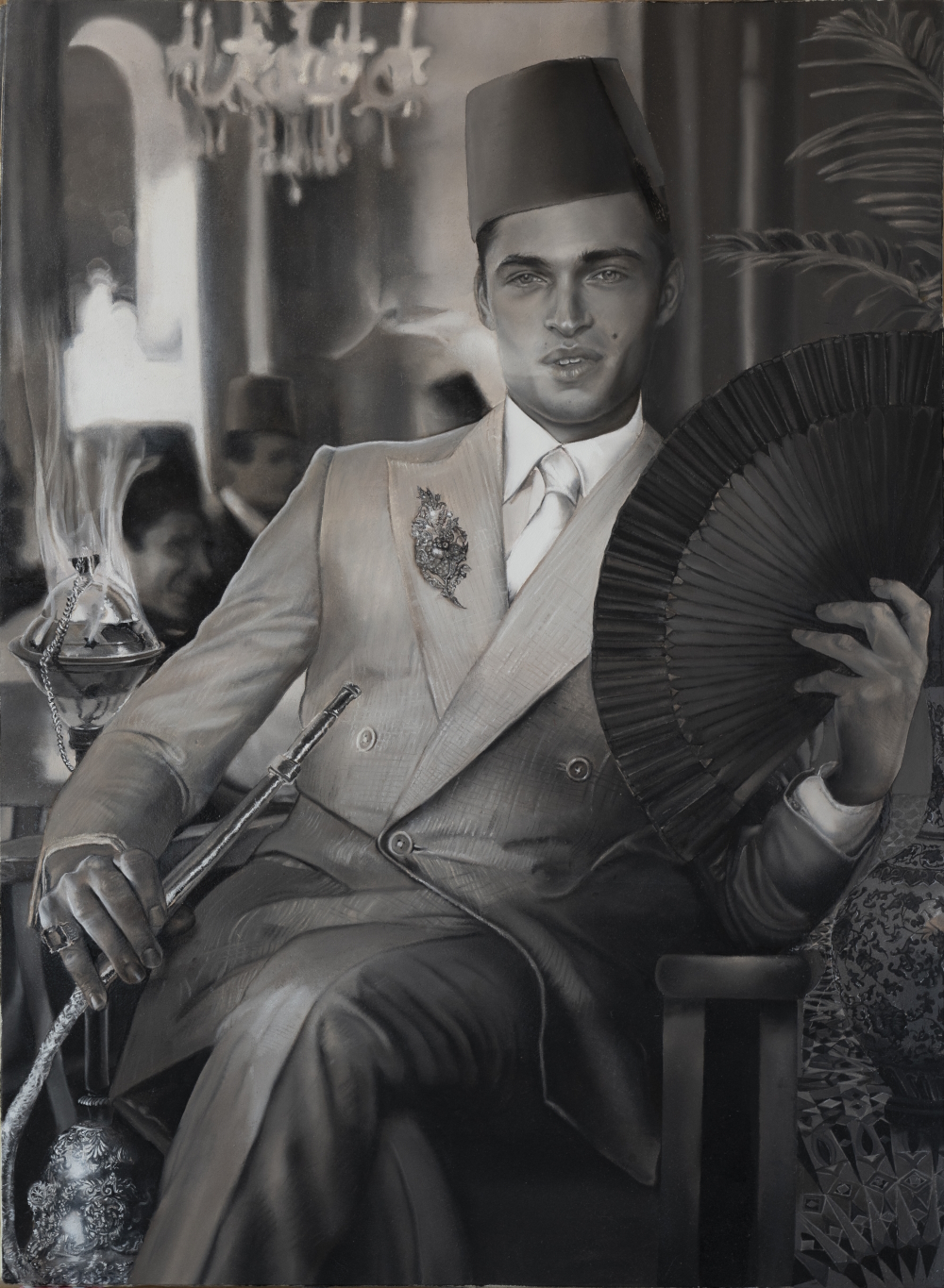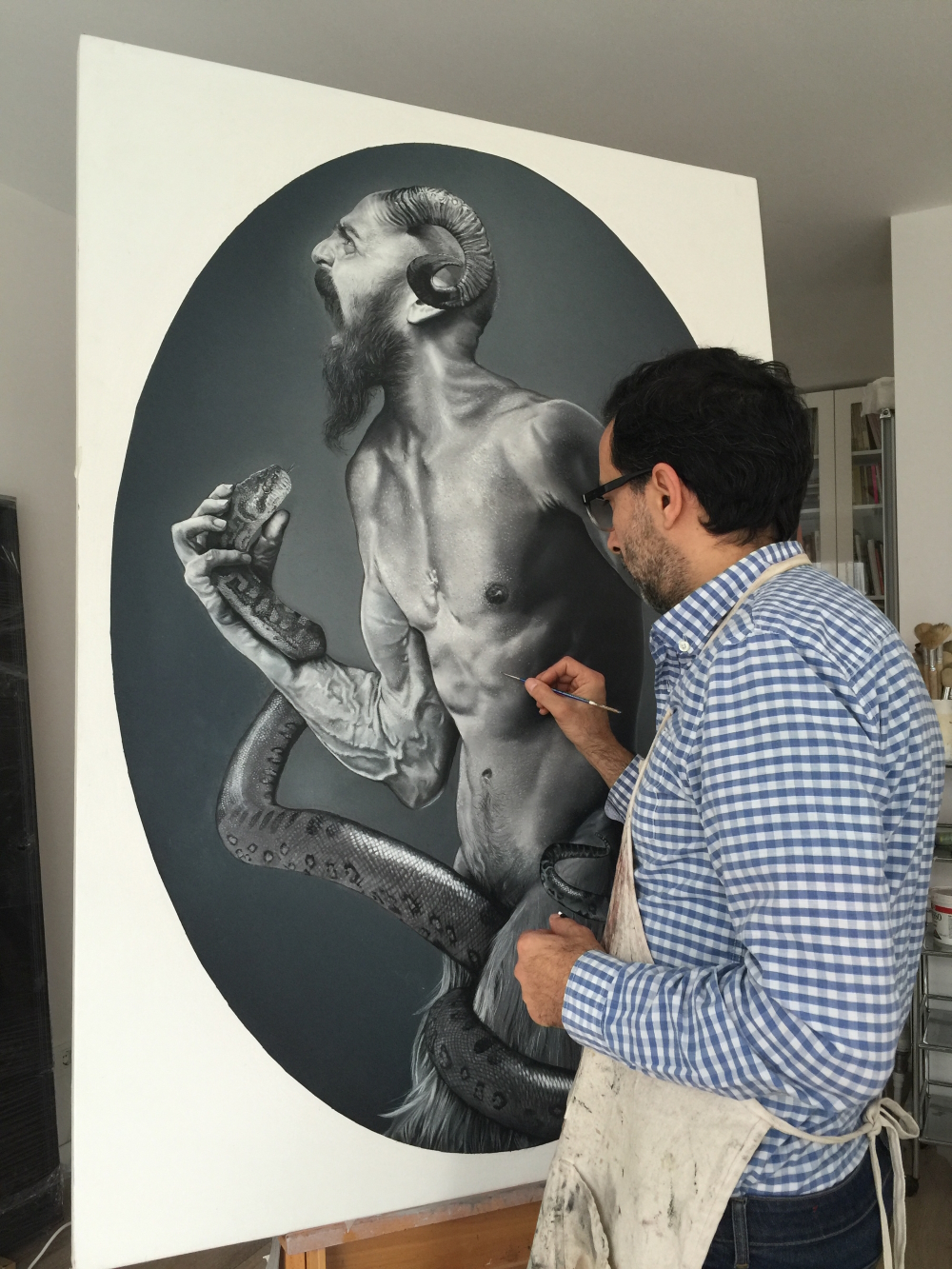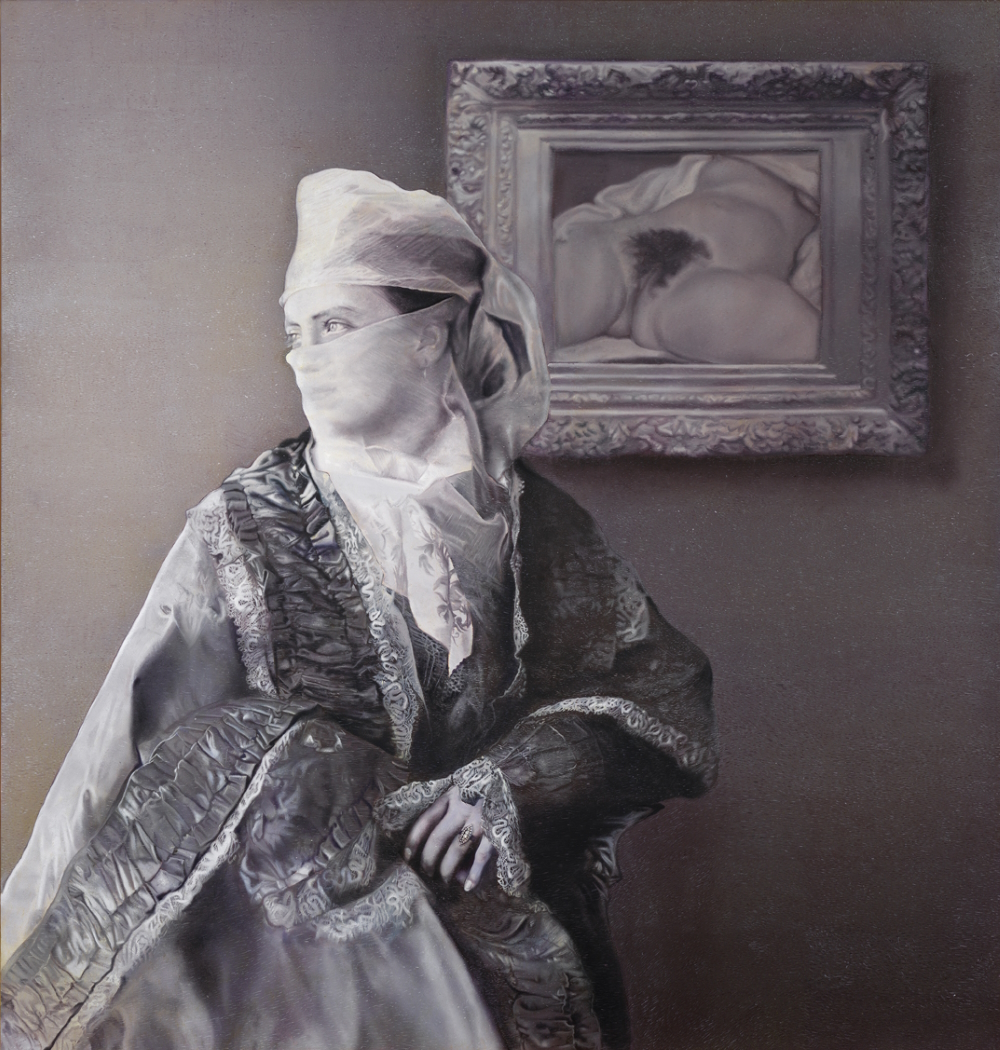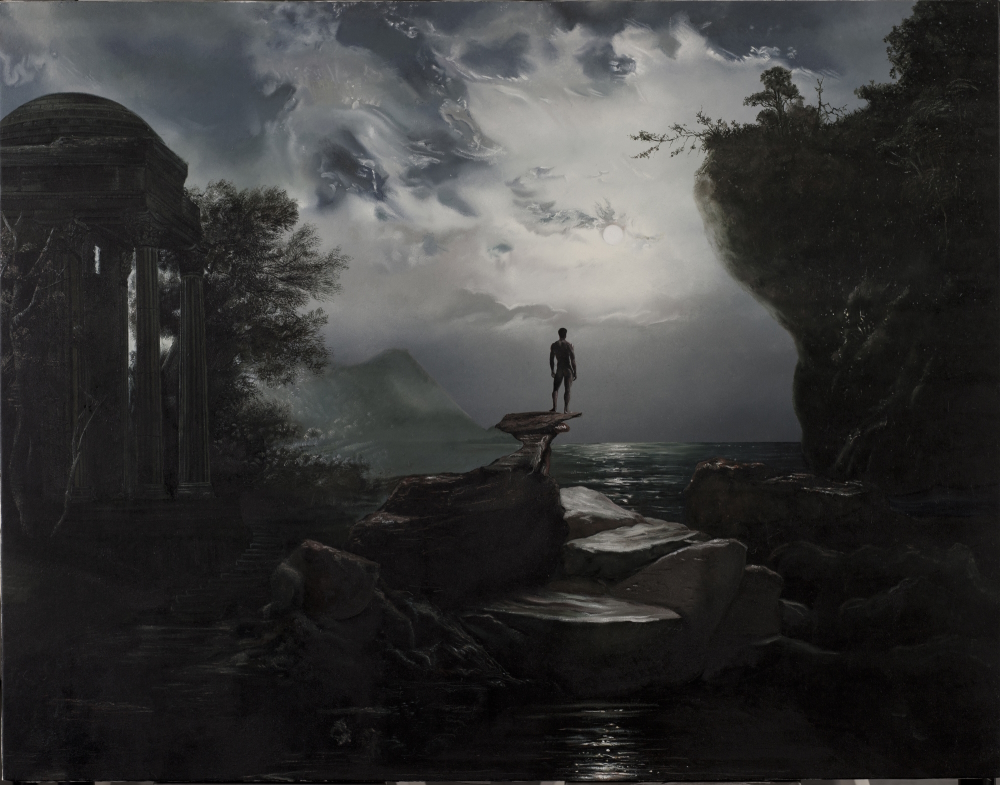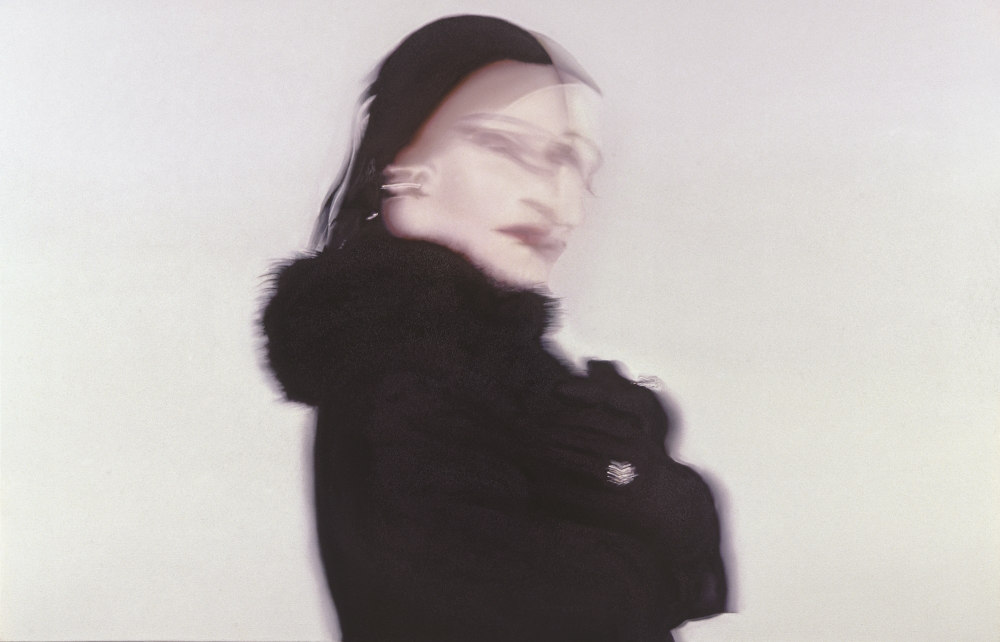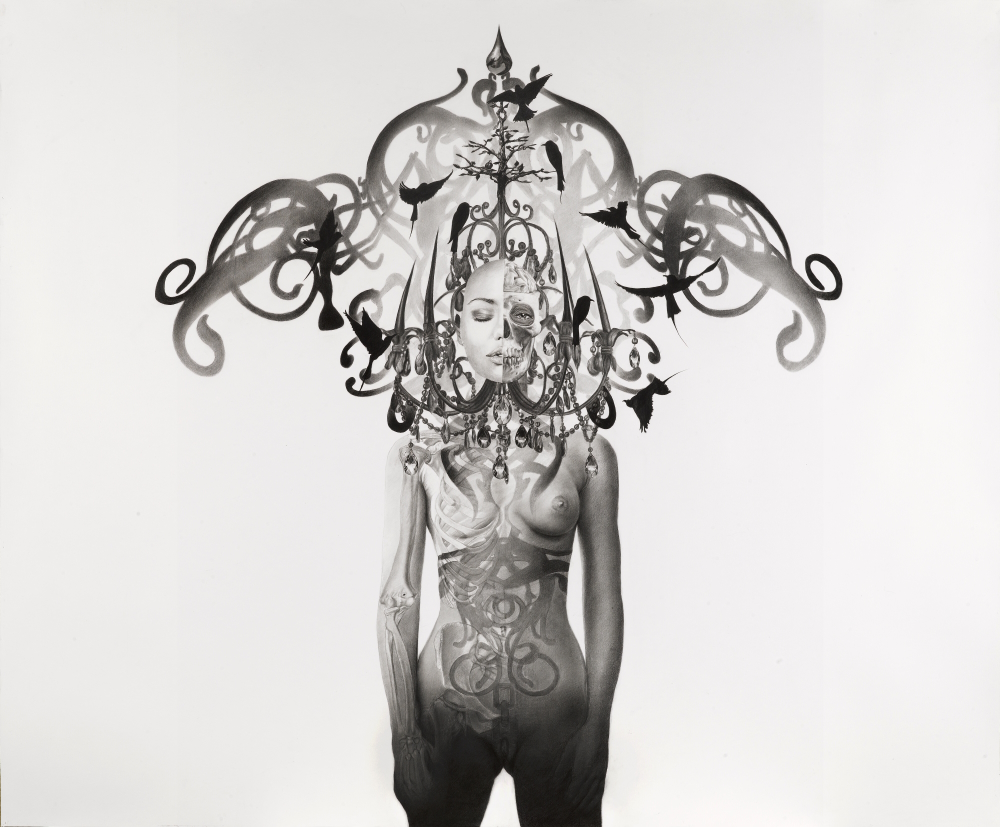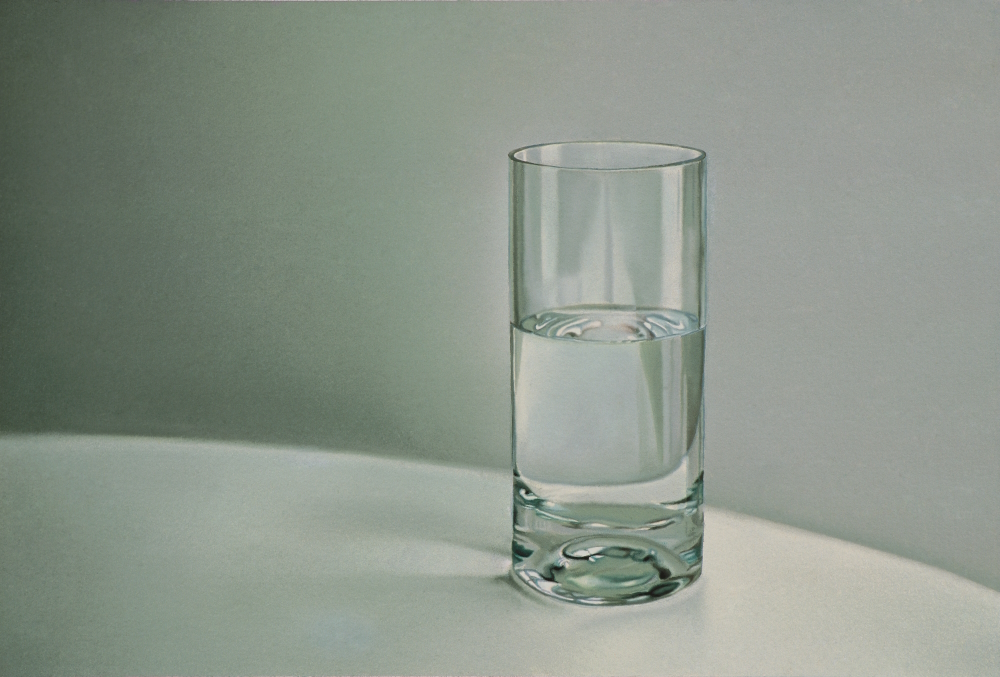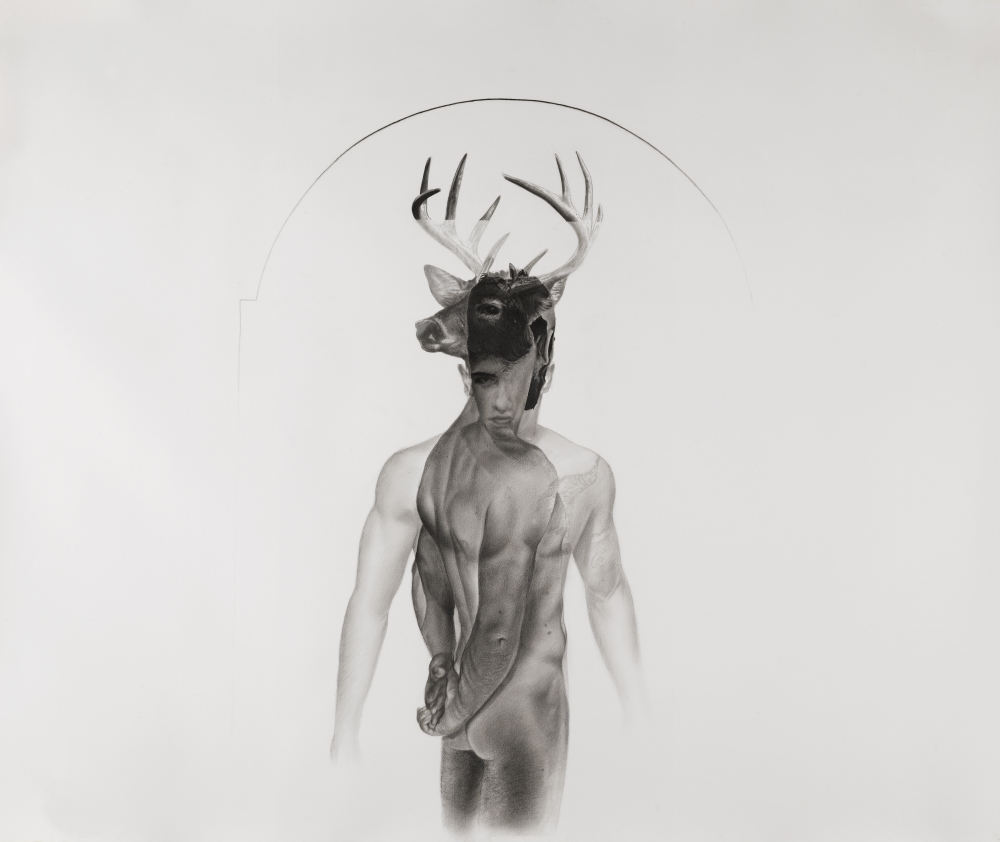Taner Ceylan
hyper-realist artist
Turkey
“Taner Ceylan makes paintings that bespeak absolute technical mastery and precision“, confirms Dan Cameron, an American curator on contemporary art. They „are also freighted with an emotional and sexual dimension usually absent from the genre – qualities that have set him apart from the prevailing tendencies in contemporary Turkish art – and which at times have also brought him outright abuse in the press!” With a complete different image motif than his own works the German-born Turkish artist was in the focus of the international media - after a perfect re-creation of a mysterious painting whose creator is said to be nobody else but Leonardo da Vinci!
Taner Ceylan
hyper-realist artist
Turkey
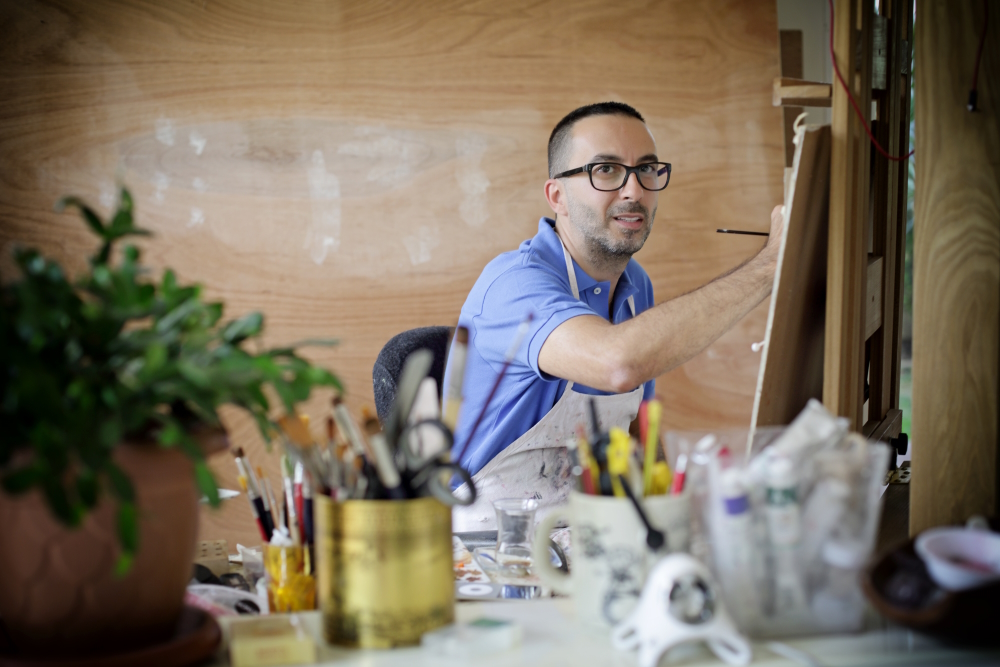
The famous painting „Salvator Mundi“ from circa 1500 attributed to Leonardo da Vinci copied confusingly similar and exhibited in an Italian art museum in October 2019! This spectacular work re-created by a hyper-realist master made headlines worldwide, because rumors are circulating around the original for years: who bought it for approximately 450 million US-dollars in 2017 at Christie’s auction? What drove the price up for „the male Mona Lisa“ (geo.de) that two art-collectores purchased in New Orleans in 2005 for just 1.175 US-dollars? Where did „the world’s most expensive painting ever sold“ (departures.com) disappear? So „the main motivation for the artist is ‚Why should this great piece of art be taken away from public view?‘“ (artnews.com). Therefore he made the indistinguishable work in a tiny bigger size visible again and sharing public cultural heritage possible. The maker is not only a very skilled person, but according to hurriyetdailynews.com „well-known for his provocative, emotional realism paintings“.
„Copying is one of the great arts throughout history.“ This statement was part of the speech by director Carolyn Christov-Bakargiev when she opened the named exhibition in the Castello di Rivoli Museo d’Arte Contemporanea in Turin, Italy. For copying perfectly the artist has to master his craft impeccable – like hyperrealistic painters do, whose works „depict reality with startling clarity“, knows viola.bz. „To create these photorealistic images takes a long time, because just every little thing has to be traced accurately. Artists work on each picture dozens, if not hundreds of hours before exhibiting their work to public. Considerable tenacity and talent of authors do these portraits of something more than just a copy of the photo. In them – the artist’s vision, emotion and fantasy world in which we live.“ Taner Ceylan is a famous first-class specialist of photo-realistic painting (either using graphite and charcol on paper or oil on canvas). The man (* 1967) studied painting in the Fine Arts Faculty at Mimar Sinan University in Turkey’s capital from 1986 to 1991 (the year of his first exhibition). Between 2001 and 2003 Mr. Ceylan worked for the Fine Arts Faculty of Istanbul’s Yeditepe University as a lecturer and was employed as an editor chief of arts of Time Out Istanbul Magazine from 2001 to 2006. Besides that he created a great body of work causing controversy often.
„Scandal can be a strategy“, Maud Favre-Bully points out in her book „Art et scandale“. „While a genuine art work“, states visual-worlds.org, „must somehow include the promise of a truth, or go somewhere along the path meant by Cézanne with its famous phrase: “I owe you the truth in painting”. Taner Ceylan does the latter in his works too. Take his ‚The Lost Paintings Series‘, for example, that are featured in the book of the same name. „They present Eastern figures in a fascinating navigation of history, power and narrative“, notes artbooksonline.com. „Esma Sultan, Ceylan's depiction of an 18th century Ottoman Princess, renowned for her cruel disposition, draws on the empowering mythology of passionate, ruthless and assertive womanhood that characterizes accounts of her life. Visualizing feminine agency and even social transgression as at the heart of history, Ceylan interrogates the historically invisible. Rummaging through the past to make a startling comment very much about the present, the Lost Paintings Series assemble a cast of lost characters and voices that embody the many silenced by both Orientalist and official nationalist histories.“ No doubt that the artist likes to deconstruct Orientalism. „Ceylan plays with and against stereotypes, portraying dusky, alluring women as well as men in fezzes and kaffiyehs, though with notable twists (the inclusion of evidently gay subjects, for instance). More to the point, he juxtaposes one sort of illusion with another —the myths and misconceptions that have emerged about the Middle East“ (timeout.com).
The picture book includes his highest priced work: the painting ‚1879‘ in which a veiled Ottoman noblewoman stands before the framed canvas of ‚L’Origine du monde‘. This scene in particular was a perfect possiblity for the humble artist („I try to paint in the traditional way in the contemporary world“) to showcase again his incredible skills by copying Gustave Courbet’s popular erotic painting from 1866.
The German-born Turkish artist has exhibited in Germany, Great Britan, China (Hong Kong), Italy, Spain, Switzerland, USA, The Netherlands and Turkey. His work (including sculptures) is included in private and museum collections.
Taner Ceylan lives and works in Istanbul, Turkey.
Interview January 2023
Photorealistic paintings: absolute technical mastery and precision freighted with an emotional and sexual dimension
INTUITION/IMAGINATION
How does intuition present itself to you – in form of a suspicious impression, a spontaneous visualisation or whatever - maybe in dreams?
Intuition or inspiration reaches me through many different channels. Sometimes in my dreams, sometimes as a daydream, sometimes through the eyes of a stranger I've never met. But this is only the first step in the creation of the work, the rest is hard labor.
Will any ideas be written down immediately and archived?
Ideas usually come while I'm working so I can put them into practice directly because it's during work. Apart from that, since the ideas that come to my mind are very powerful, it is not possible for me to forget.
?: How do you come up with good or extraordinary ideas?
You face so many ideas during the day, they come to your mind. But it's up to you to distinguish which of them is good or bad. Here, too, I think it is very important to follow the latest innovations as much as you follow contemporary art and classical art, and even from film to fashion, from literature to cinema. Both self-perception needs to be very strong and processing aesthetics as an experience and a science is very important in decision making.
?: Do you feel that new creative ideas come as a whole or do you get like a little seed of inspiration that evolves into something else and has to be realized by endless trials and errors in form of constant developments up until the final result?
Actually, it's both. But in any case, it takes a lot of work and time to turn what you see in your imagination into reality, no matter how it comes.
What if there is a deadline, but no intuition? Does the first fuel the latter maybe?
I do not accept any exhibition proposal if there is no time frame required to create the work. Because, as you mentioned, the arrival of an inspiration means more than half of the work, as well as time.
INSPIRATION
What inspires you and how do you stimulate this special form of imaginativeness?
First of all, it should be noted that art is an alternative way of living alongside the reality we live in. In short, the artist leads a very happy life in the biosphere he has created. So I literally become the person I want to be, in a parallel time and space. MetaVerse, which was created for everyone in today's terms, has actually been experienced by artists for centuries. Every artist has different desires and different expectations. Things and atmospheres that will make me live the highest version of my soul and being motivates me most.
?: How do you filter between ideas worthwhile pursuing and bad ones that you just let go of?
My biggest help here is time. As a result of months of work, those eliminations take place over time. Of course, these concepts are very relative here, what is good for you is also bad for someone else. It's all about staying true to yourself.
Has it to appeal to you primarily or is its commercial potential an essential factor?
When you are not sincere and genuine, it is not possible to sell anymore, the money will come eventually, just be stable and loyal to yourself. Long gone are the times to be discovered like Van-Gogh after he died.
Do you revisit old ideas or check what colleagues/competitors are up to at times?
Of course, this is an indispensable part of my job. In order to be yourself, you must first follow what your contemporaries are doing, otherwise you will already be out of date and repeat the past.
CREATIVITY
Which time/place/environment suits your creative work process the best (tranquillity or pressure) and which path do you take from theory/idea to creation?
Life does not always proceed peacefully, you go through a lot of ups and downs. But as a painter, I need very peaceful and quiet environments to convey these at the end of the day. In other words, when I am depressed and unhappy, it is out of question for me to produce. You are channeling somewhere, and in order to listen to the sound coming from there, you have to be silent.
What is better in the realization process: speed and force creativity i.e. grasp the magic of the moment, or a slow, ripening process for implementation/elaboration?
To tell you the truth: I stand between the two of them. In other words: both cases you mentioned are the continuation of each other.
?: Do you have any specific strategies you use when you are feeling stuck creatively?
Law of attraction, to rezonate again with my inner self - music, art and good vibes helps me a lot.
How important are self-doubt and criticism (by others) during such a process i.e. is it better to be creative on your own, only trust your own instincts, or in a team?
This is a very sensitive process, and it can be very dangerous to receive criticism from the eyes of others. As I said, as long as you can be yourself, in a real sense, your soul eliminates the bad and does not allow it to emerge. Therefore, I prefer to trust my own Instinct.
Should a creative always remain true to him-/herself including taking risks & going against the flow or must one, for reasons of (commercial) survival, make concessions to the demands of the market, the wishes of clients and the audience’s expectations?
There is a very sensitive point here that needs attention. We are now in such times that if you are not original as an artist, if you are not good and not genuine and sincere, it is not possible to sell. Both galleries and collectors are now very aware of this, and everyone is seriously educated and conscious. A sad situation may arise, if the artist thinks that he is loyal to himself, but in fact he is completely copying the past, his awareness is not developed and the art he is doing is bad, this is a very bad thing that can happen to an artist, for example, not being aware of what he is doing. So if you can actually sell it, that means you're good. Of course, we should not generalise this, it is very important who you work with and where you sell to whom. But we're not talking about mediocre here anyway.
How is innovation still possible if one has established a distinctive style and, just in case, is it good to be ahead of one’s time even one hazards not being understood?
There is no such possibility anymore. These times are over.
When does the time come to end the creative process, to be content and set the final result free - or is it work-in-progress with an endless possibility of improvement?
It takes between three months to six months to complete one painting of me. For this reason, I don't have to make a decision right away, I even cover the picture for a long time, I don't look. That's why the voice inside me tells me where to stop at the right time. In some cases, the work is finished, but since I can't break away from the atmosphere and life of that painting, I extend it specially, I spend overtime, I put unnecessary details a lot. So I don't leave my pictures unfinished.
?: In case of failure or - worse - a creativity crisis how do you get out of such a hole?
I already answered it…
SUCCESS
Should/can one resist the temptation to recycle a ‘formula’ one’s successful with?
It is important to define success well here: is it money, fame or staying true to yourself...? If you start to produce things that don't excite you at the end of the day, you've already lost.
Is it desirable to create the ultimate/timeless work, but doesn’t “top of the ladder” bring up the question of “what’s next?” i.e. isn’t such a personal peak “the end”?
The pinnacle of man on this planet is death. Human kind is an endless poetry, a melody. A work that has caught the truth is always eternal, timeless. The artist often lags behind his work…
MY FAVORITE WORK:
I had a very difficult couple of years in the 2000’s: art authorities, critics. I was unfairly criticised by the art scene. At a time when I was feeling very lonely and hopeless, I decided to paint this painting as a tribute to Sotheby's in England which offered me a show. A picture of an injured boxer who is ready to defend himself against all odds. Afterwards, the painting was such a great success that I gave my answer to everyone with the fame it brought in the international arena.
